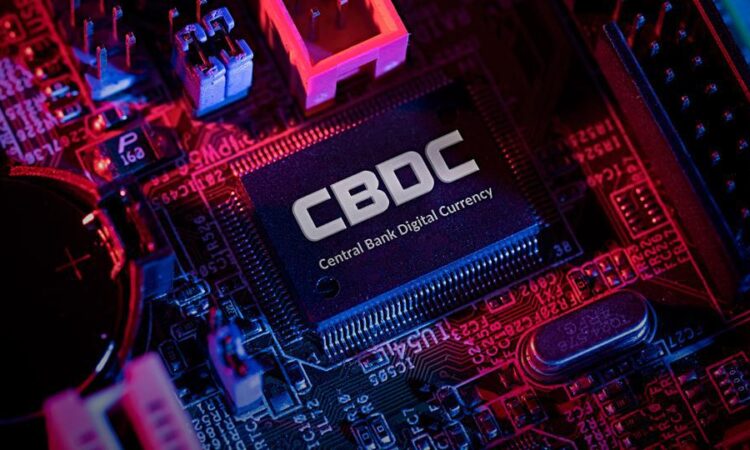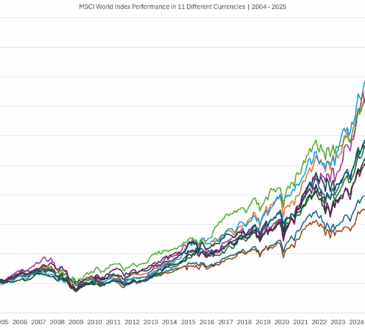
Editorial Note: We earn a commission from partner links on Forbes Advisor. Commissions do not affect our editors’ opinions or evaluations.
The U.S. government is reportedly exploring the creation of a central bank digital currency, commonly referred to as a CBDC.
According to Treasury Secretary Janet Yellen, a digital dollar could help lower transaction costs and support a faster payments infrastructure in the U.S.
While Yellen might like the idea of a CBDC, digital assets have gotten a bad rap recently. Privacy advocate experts worry that digital currencies would give governments too much control over how and where people spend their money. Many see them as the ultimate tool of government financial surveillance.
The U.S. is a latecomer to the CBDC party. China’s digital yuan pilot program is being used to pay salaries today, while the Bahamas’ sand dollar is legal tender in the Caribbean nation. Australia, Thailand, Brazil, India, South Korea and Russia are running or preparing to launch CBDC projects.
What Is a CBDC?
CBDC stands for central bank digital currency, a digital form of legal tender currency that is issued by a country’s central bank. Like other forms of digital currency, such as cryptocurrency, a CBDC is only available in electronic form.
In nearly every country, the vast majority of money is held in the form of electronic bank records. People can withdraw money from such computerized accounts as physical cash. What differentiates a digital currency is that it only exists as an electronic record, unavailable as coins or banknotes.
Presently, coins and Federal Reserve notes—available in denominations of $1, $2, $5, $10, $20 and $100—are the only type of currency that is legal tender in the U.S.
CBDCs are comparable to stablecoins, with important differences. Stablecoins are private cryptocurrencies that are pegged to a fiat currency, such as the U.S. dollar. CBDCs are centralized currencies that are issued and operated by a government.
Central bank digital currencies come in two forms, wholesale and retail.
Wholesale CBDCs
Wholesale CBDCs are designed to meet the needs of big financial institutions. Banks and corporations use wholesale central bank digital currency for settlements and transactions.
Wholesale CBDCs work a bit like central bank reserves—money that banks are required to hold in accounts at a central bank, to guarantee financial stability.
Commercial banks, corporations and payment processors hold wholesale CBDCs in accounts at the central bank. To settle a transaction, the account of the bank that has net obligations is debited, and the account of the bank with a net claim is credited.
Wholesale CBDCs help with complicated conditional transactions, such as payments that settle only once another payment or asset has been delivered.
Retail CBDCs
Retail CBDCs are used by the general public like any other common form of legal tender. There are two versions of retail CBDCs:
- Token-based retail CBDCs allow users to execute transactions anonymously by using public or private keys.
- Account-based retail CBDCs require digital identification, such as a username and password, to access an account.
One big advantage of retail CBDCs over other forms of digital currency, like stablecoins or Bitcoin (BTC), is that the only intermediary is the central bank. The system is highly centralized, but theoretically very stable.
Cryptocurrencies depend on decentralized networks of intermediaries. To function smoothly and remain stable, Bitcoin relies on groups of bitcoin miners and software developers. Other cryptocurrencies may depend on crypto exchanges, wallet providers or stablecoins systems.
Advantages of CBDCs
Proponents of CBDCs argue that they would lower costs, offer greater transparency and improve efficiency for national payment systems. They could also help improve access to financial services, particularly in developing regions of the world that have limited or unreliable banking services.
For central banks, CBDCs offer new monetary policy tools to stimulate a slumping economy or reduce inflation. Users could enjoy minimal or no fees for instant money transfers, and the government could instantly send and track direct economic stimulus payments to the accounts of all citizens.
Nicholas Juhle, chief investment officer at Greenleaf Trust, says a CBDC would allow for faster, lower cost, more secure transactions.
“Most money in the United States is already electronic, but it is not supported by a decentralized database like blockchain, which means transactions are cumbersome,” Juhle says. “I would think of a transition to a central bank digital currency as an upgrade to the archaic plumbing of the financial system.”
Disadvantages of CBDCs
Critics of CBDCs are concerned about their potential to increase the power of central banks, particularly when it comes to factors such as credit allocation decisions.
Some skeptics point out the potential for increased government surveillance of financial transactions. The infrastructure of a CBDC would potentially determine who has access to the currency and under what conditions.
Central banks could even choose to restrict savings and spending, implement negative interest rates, set up automatic tax collection or eventually eliminate physical cash completely.
Paul Farella, CDAA and managing director for registered investment advisor Willow, says investors can only trust CBDCs as much as they trust the government backing them.
“Through the eyes of a power-hungry state, CBDCs provide huge benefits around surveillance through the ability to track, monitor, and control all financial transactions on the CBDC’s network,” Farella says.
“This gives the government the ability to freeze or blacklist anyone using their system, and they could have complete insight into every transaction you make and know exactly how you spend your dollars and who you send them to.”
However, Adam Jordan, director of investments for Paul R. Ried Financial Group, says any American who uses a debit card can already have their payments tracked.
“The concern about privacy is a real one, but only if a government went so far as to try to eliminate physical currencies,” Jordan says. “The government already has the ability to track all our digital electronic payments.”
How Many CBDCs Are There Today?
There are currently more than 100 countries exploring the use of CBDCs, and those countries represent more than 95% of global GDP. Several major central banks have already launched different versions of central bank digital currencies.
The Bahamas was the first country to introduce a CBDC when it launched the Sand Dollar in October 2020. Nigeria became the first African country to implement a CBDC, the eNaira, roughly a year later.
DCash is an account-based retail CBDC that was rolled out in the Eastern Caribbean in late 2020. DCash users hold deposit accounts directly with the Eastern Caribbean Central Bank. The bank is currently testing the CBDC to see if it will help increase financial inclusion, growth, competitiveness and stability for residents.
China has also been testing its e-CNY CBDC since 2020. Despite giving away millions of dollars in digital yuan to Chinese citizens, heavily promoting its use during the Beijing Winter Olympics and pressuring privately-owned apps such as Alipay and Tencent to support e-CNY, the e-CNY has reportedly struggled to gain traction as a serious threat to private digital payment apps.
In September 2022, the U.S. Office of Science and Technology Policy published a report outlining the shape of a potential U.S. CBDC system. It analyzed technical design choices, overall feasibility and the potential impact on government operations—however, it did not make any recommendations or reach any conclusions about whether a CBDC is in the U.S. national interest.
The Biden administration has said a U.S. CBDC should “expand equitable access to the financial system, preserve the role of physical cash, and only collect data that is strictly necessary.”



